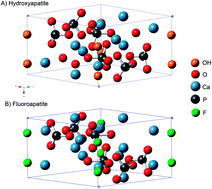Comments on “Dental lessons from past to present: ultrastructure and composition of teeth from plesiosaurs, dinosaurs, extinct and recent sharks” by A. Lübke, J. Enax, K. Loza, O. Prymak, P. Gaengler, H.-O. Fabritius, D. Raabe and M. Epple, RSC Adv., 2015, 5, 61612
Abstract
The paper mentioned in the title suggests that several groups of extinct vertebrates used fluoroapatite as a tooth mineral in dentine and enamel when alive; its authors posit that this tooth mineralization drastically changed in all these lineages at some point during their evolution, leading to the use of hydroxyapatite as an alternative primary tooth mineral, because of hitherto unconsidered environmental changes. These conclusions are based on their finding high fluoride levels (i.e. fluoroapatite) in the dentine of fossilised shark teeth as well as in both the dentine and enamel of plesiosaurs, mosasaurs, and dinosaurs, which is in sharp contrast to recent teeth (which contain almost no fluoride in the dentin or enamel; i.e. hydroxyapatite). However, in our opinion, the authors have either obviated or underestimated a process well known to palaeontologists and archaeologists: the fluorine content of fossil teeth and bones increases with age during the course of fossilization because of the diagenetic passage of hydroxyapatite to more stable fluoroapatite. Thus, the aim of this letter is to show that the high fluoride contents found in the questioned paper are due to the diagenetic alteration of fossils, with the goal of avoiding future confusion.


 Please wait while we load your content...
Please wait while we load your content...